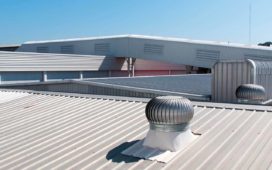Machines have been an integral part of our society. Whatever we do, wherever and whenever we are, we are surrounded by machines. Machines have been vital especially in manufacturing plants where speed and quality are needed to produce excellent outputs. In the past years, Artificial Intelligence has been on the rise. Machines are now integrated with AI technology wherein it can work with little to minimum human supervision. For the best automation solutions for your business, visit IntelLiDrives
As such, the need for mass workers has been dwindling as machines took over the difficult processes in the production. In factories, machines have been a huge help in decreasing cycle times and increasing outputs. Not only are these new AI machines important in the manufacturing sector, but it also affects the economy as the higher the production of manufacturing plants, the higher profit that a company can have which can affect a country’s Global Domestic Product (GDP).
But with these advancements of machinery, what will be the future of factory automation and how will it address the problem of worker accidents happening in manufacturing plants?
In an interview conducted by Fung Institute for Engineering Leadership from UC Berkeley Engineering where they interviewed Professor Masayoshi Tomizuka last 2019, the professor has been vocal on his research about machines that can collaborate with humans where they can predict if a human is close by in order to prevent worker accidents.
In a report published by the United States Bureau of Labor Statistics in 2018, 43% of the work fatalities that happened were because of the following causes stated below:
- a) Falls and slips
- b) Contact with machinery
- c) Exposure to unhealthy environment and chemicals
- d) Fires and explosions.
These causes of death are directly and indirectly caused by machines which is where Professor Tomizuka’s goal comes in the picture. Even though most of the work is done by machines, there are times that workers are needed to operate, maintain and calibrate it, that is why it is important to practice workplace safety. According to Professor Tomizuka, he wants to lessen the accidents that happened due to machine malfunctions and ensure the safety of workers without affecting the production.
As stated above, to have a successful manufacturing plant, the workers’ safety should be paramount and deploy machines that would not easily hurt them as common machines in factories were humongous and have large parts attached to them that can easily injure someone. Even though machines can accelerate the rate of production, any human injury can immediately halt the production.
Professor Tomizuka’s dilemma is the same and he wanted to find a way where machinery and workers can work without comprising worker safety, so he conducted a Safe and Efficient Robot Collaboration System with that goal. As such, his experiments involve attaching sensors to robots wherein they can sense the environment they were put in and the workers around the machinery. These sensors can also track an object’s movement and cataloging it to track the position of the object but even with multiple sensors, the machines did have a hard time capturing all the information it needs.
Since the Industrial Revolution wherein machines have replaced humans in doing tasks, workers were still at risk of getting injured no matter how long they were exposed with the machine. But with research like the one above, in a few years, we might see the completion of the Professor’s project and help many factories around the world in increasing their worker safety.
But, in the meantime, while engineers are finding ways to make machines accident free, it is important to implement protective measures that will lessen the chance of worker accidents from happening. For example, the organization can practice routine machine check-ups wherein maintenance teams have assignments to regularly inspect machines in the factory. These maintenance checks will not only help prevent worker accidents but also can help the management to predict if the machinery is nearing breakdown which can save the company with money that should have been for repairs.
Additionally, the maintenance reports can be used for analysis to prevent that has been repeatedly arising. Analyses such as a) Risk Cause Analysis (RCA) which is a process of identifying root causes of the problems by essentially getting the “root” of the generic problem and asking them ‘why’ question until it cannot be answered anymore, b) Failure Modes and Effects Analysis (FMEA) is an approach of evaluating when and where of your equipment and manpower will fail and even develop solutions that will prevent it in the long run.










